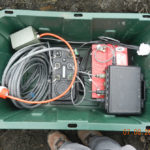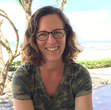Volcanology for Dummies
 Every book idea begins with “what if?” For Love in the Time of Surfing, it was: “what if a woman gets drawn into a dangerous adventure to rescue her miscreant stepbrother?” I knew that the protagonist was some kind of scientific bigshot, and I needed a reason for her to be in Costa Rica, the setting for the story. In a flash, I knew that she had to be a volcanologist studying Arenal, an active volcano located in the center of the country.
Every book idea begins with “what if?” For Love in the Time of Surfing, it was: “what if a woman gets drawn into a dangerous adventure to rescue her miscreant stepbrother?” I knew that the protagonist was some kind of scientific bigshot, and I needed a reason for her to be in Costa Rica, the setting for the story. In a flash, I knew that she had to be a volcanologist studying Arenal, an active volcano located in the center of the country.
I have a background in geology and a fervent love for volcanoes, but I needed details on the kind of study my protagonist was doing. I reached out to my friends from the University of Washington, where I earned my B.S. in geology. These friends connected me to Dr. Diana Roman, Staff Scientist at the Carnegie Institution for Science in Washington D.C. who has studied a type of earthquake on Central American volcanoes. What follows are excerpts from our many conversations.
Amy Waeschle: Thanks again for helping me! I am super excited to learn from you. Okay, so the book will open with a scene featuring Dr. Cassidy Kincaid, the protagonist, on the mountain. What would her seismic station on the mountain look like? Can you describe the ground, what plants are growing, air temperature, weather, etc. What does the actual seismic data recorder look like, does it have an official name? A slang or alternate name?

Seismic station about to be installed
Dr. Roman: It generally consists of a seismic sensor buried in a shallow pit (a couple feet depending on how easy it is to dig and how much time we have), connected to a box on the surface (we often use Action Packer type boxes, though usually you only find generic versions in C. America) that houses a digitizer (basically a mini computer that records the signals coming off the sensor, a car battery or two, some cables and bits to run the electronics, and a small GPS unit that logs time very precisely). There’s also a solar panel or two set up on a mount to recharge the battery.
The ground on the slopes of volcanoes can be a mix of rock, soil, sand, ash depending on the particular site. We generally hunt around for spots where the rocks aren’t too bad so that we can dig a deep-enough hole, and we try to stay clear of high vegetation that would interfere with the ability of the GPS and solar panel to see the sky. At the same time, we try to hide the station as much as possible so that people are less likely to find it (batteries and solar panels have a habit of walking off, even in remote locations). In Costa Rica it would probably be hot and humid and maybe even rainy (we work in all conditions). Technically, the whole setup is a “seismic station” and the part that’s in the ground is a seismometer and the entire kit is very delicate (very sensitive electronics and mechanical parts). It’s not uncommon for it to be working fine in the lab before shipping to a field site and then malfunctioning during the install, so sometimes the phrase “piece of crap” gets used. 



